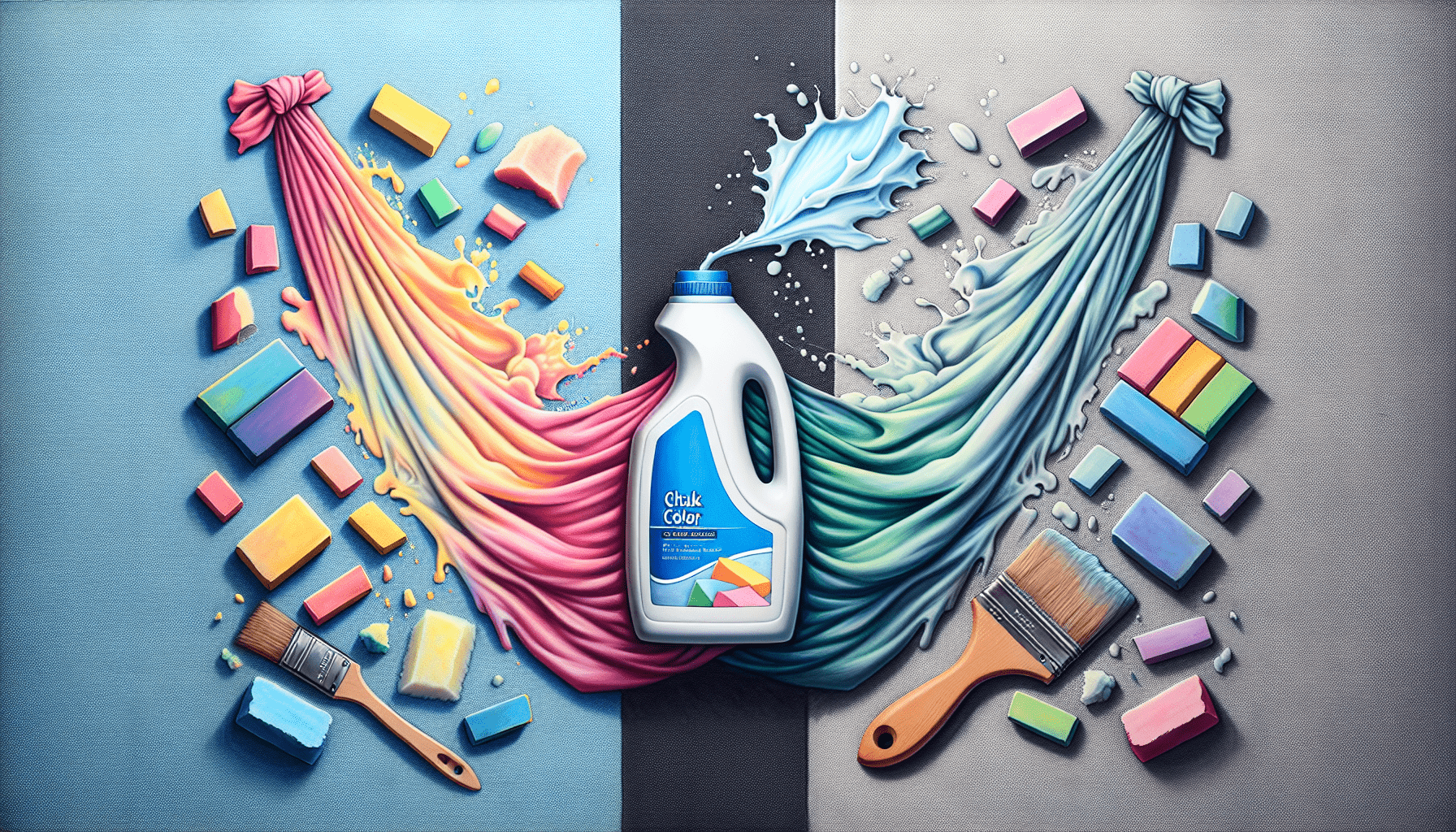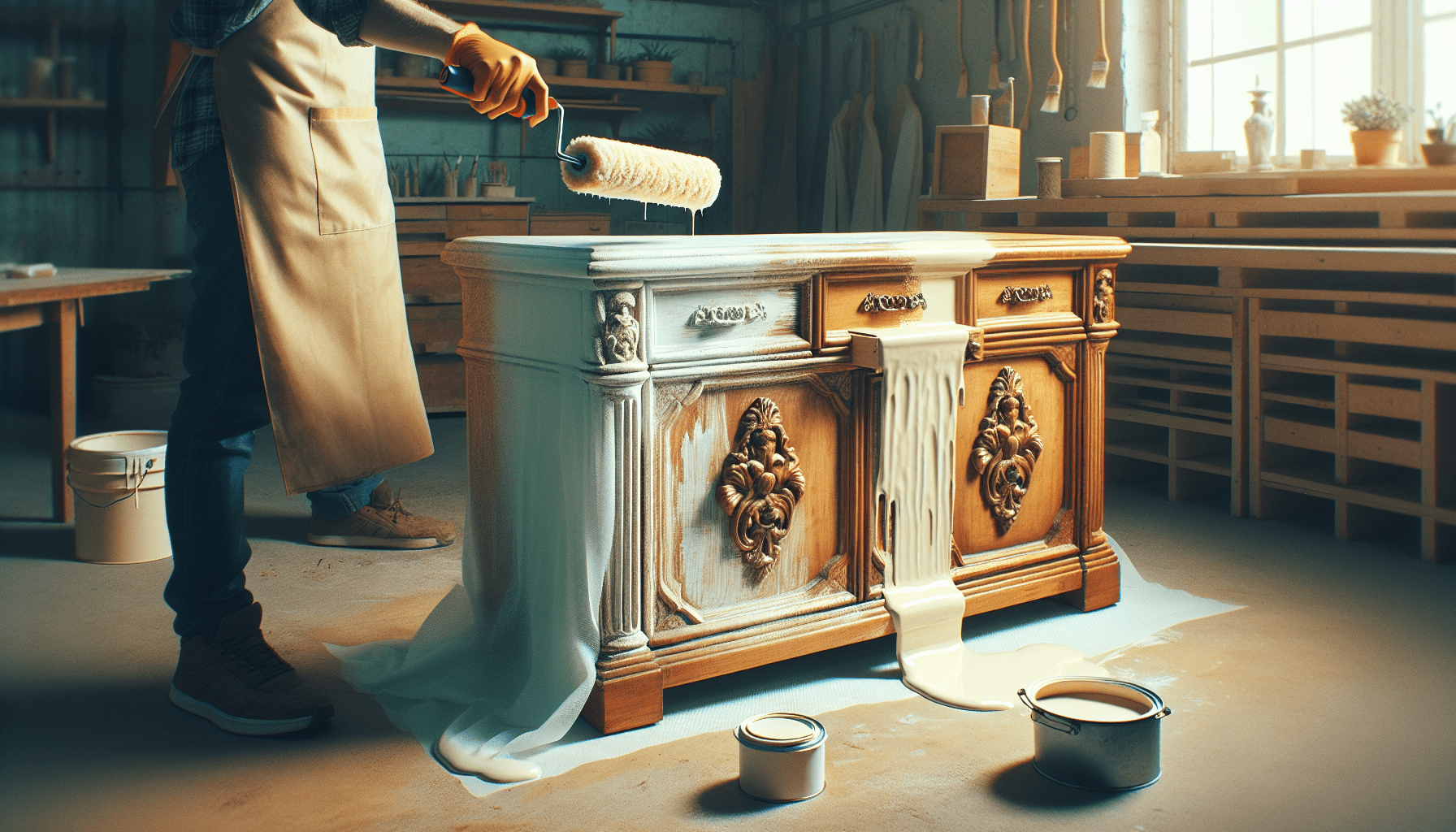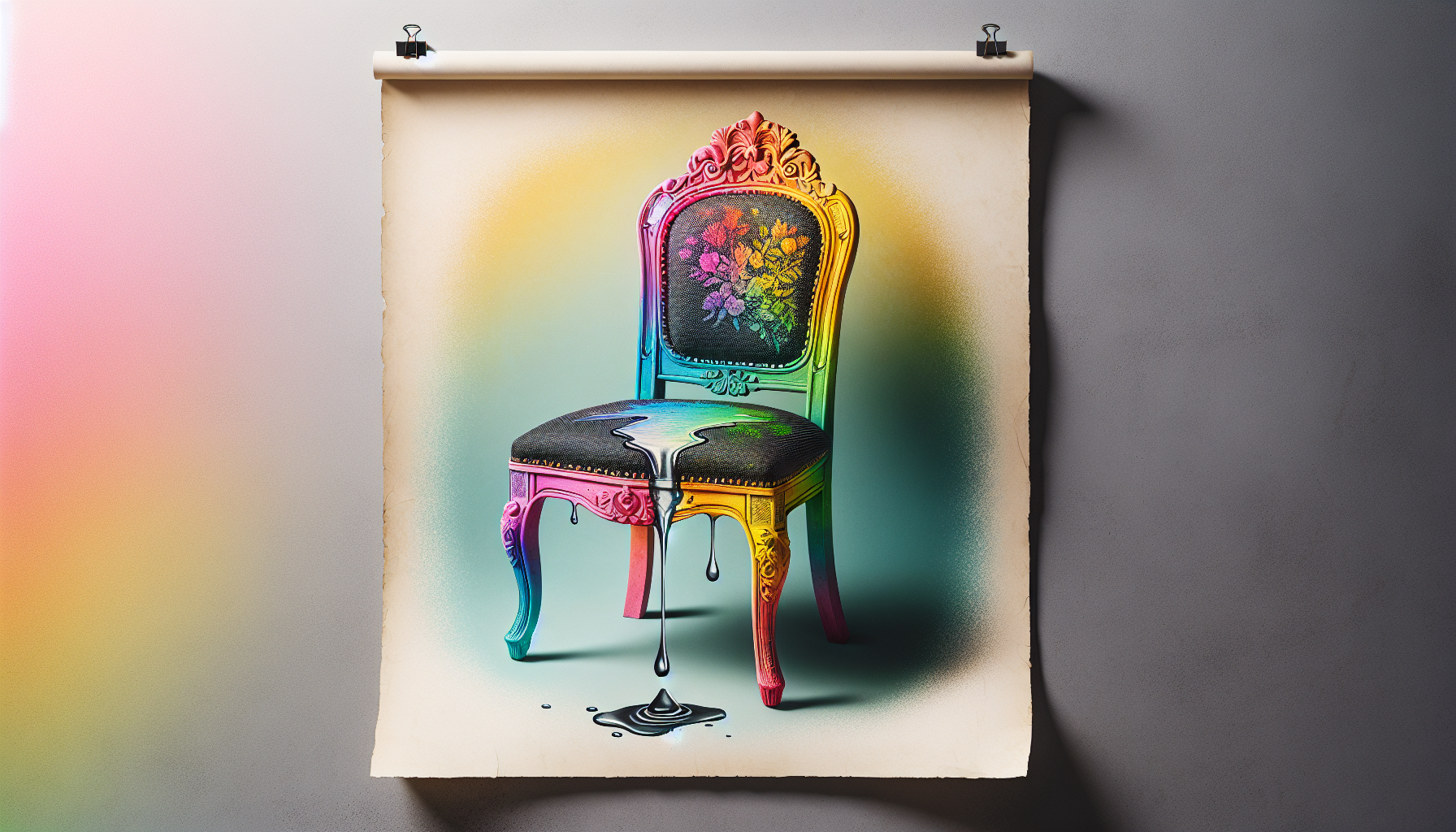In the world of DIY home decor, chalk paint is a popular choice for transforming furniture and fabrics. However, if you’ve ever worked with chalk painted fabric, you may have noticed that it can sometimes result in a stiff and rigid texture. Luckily, there are a few simple techniques you can utilize to soften chalk painted fabric and achieve a more comfortable and luxurious feel. In this article, you will discover effective methods to soften chalk painted fabric, allowing you to enjoy both the beautiful aesthetics and the cozy texture it can bring to your home. So let’s explore these techniques and unlock the secret to achieving a softer and more inviting fabric surface.
Introduction
Chalk paint has gained popularity in the world of DIY furniture makeovers, but did you know it can also be used on fabric? Chalk paint is a versatile medium that provides a matte, velvety finish. When applied correctly, it can transform plain fabric into a vintage or distressed masterpiece. However, chalk painted fabric can sometimes feel stiff and uncomfortable. In this article, we will explore the process of softening chalk painted fabric and share some valuable tips and techniques to help you achieve a beautifully soft and durable finish.
Preparing the Fabric
Before delving into the process of softening chalk painted fabric, it is crucial to properly prepare the fabric beforehand. This involves determining the suitability of the fabric, cleaning it thoroughly, and removing any existing finish or paint.
Determining fabric suitability
Not all fabrics are suitable for chalk painting. Fabrics with a tight weave like cotton, linen, and canvas tend to yield the best results. Avoid using fabrics with loose weaves or delicate materials that may not withstand the painting process.
Cleaning the fabric
To ensure a successful outcome, it is essential to clean the fabric thoroughly before applying chalk paint. Use a mild detergent and warm water to remove any dirt, stains, or residues that may interfere with the paint’s adhesion. Afterward, rinse the fabric thoroughly and allow it to dry completely before proceeding.
Removing any existing finish or paint
If the fabric has a previous finish or paint layer, it is crucial to remove it before applying chalk paint. Use a fabric-safe paint remover or sand the surface gently using fine sandpaper. Be careful not to damage the fabric during this process and ensure you remove all traces of the previous finish for optimal results.
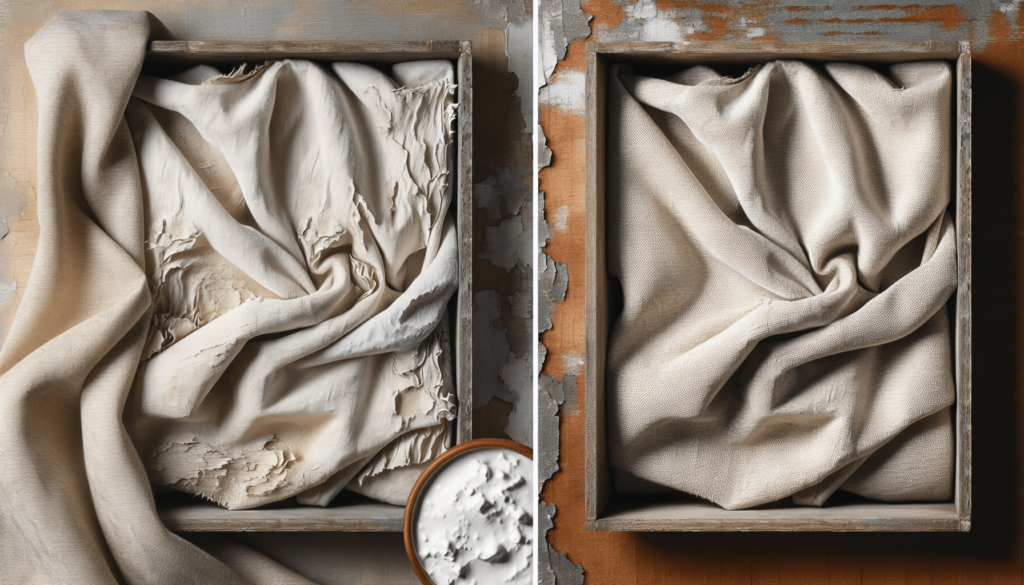
Choosing the Right Chalk Paint
Not all chalk paints are created equal, so it is vital to choose the right one for your fabric project. Understanding the different types of chalk paint, considering color and texture, and selecting a paint suitable for fabric are all crucial aspects to consider.
Understanding different types of chalk paint
Chalk paint comes in various formulations, including water-based, latex-based, and even homemade recipes. Each type has its own characteristics and suitability for different projects. When choosing a chalk paint for fabric, opt for water-based or fabric-specific chalk paints, as they are designed to adhere well to textiles and offer the best results.
Considering color and texture
When selecting a chalk paint for fabric, consider the color and texture you desire for your project. Chalk paint tends to dry to a matte, velvety finish, which can lend a vintage or distressed look to the fabric. Experiment with different colors and textures to achieve the desired aesthetic for your project.
Selecting a paint suitable for fabric
Some chalk paints are specifically formulated for use on fabric. These paints often contain textile mediums or additives that enhance the paint’s adhesion and flexibility, resulting in a softer finish. Look for chalk paints specifically labeled for fabric use to ensure the best possible outcome.
Applying Chalk Paint to Fabric
Now that you have prepared your fabric and chosen the right chalk paint, it’s time to apply the paint to the fabric. Proper preparation, using appropriate brushes or rollers, and applying multiple coats if necessary are key steps in achieving a soft and durable finish.
Preparing the paint
Before applying the paint to the fabric, ensure it is properly mixed and free of any lumps or clumps. Stir the paint well using a paint stirrer or a wooden stick until it reaches a smooth consistency. This will ensure an even application and prevent any unwanted texture on the fabric.
Using appropriate brushes or rollers
When applying chalk paint to fabric, it is crucial to use the right tools. Opt for soft-bristle brushes or foam brushes specifically designed for fabric applications. These brushes will help you achieve a smooth and even coat without damaging the fabric. Alternatively, you can use foam rollers for larger fabric surfaces to ensure an efficient and seamless application.
Applying multiple coats if necessary
Depending on the type of fabric and the desired coverage, you may need to apply multiple coats of chalk paint. Allow each coat to dry completely before applying the next. This will help achieve a more even and consistent color on the fabric. Be patient and take your time to ensure each coat is thoroughly dry before proceeding.
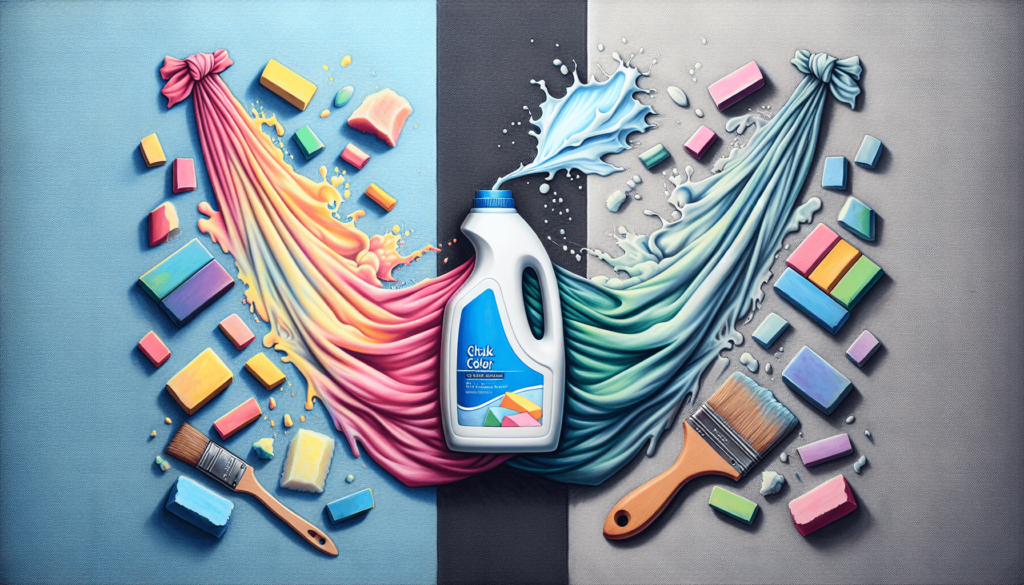
Drying and Curing the Chalk Paint
Once you have applied the chalk paint to the fabric, it is crucial to allow sufficient drying time and cure the paint to ensure durability. Following these steps will help prevent the paint from cracking or peeling over time.
Allowing sufficient drying time
After the final coat of chalk paint is applied, allow the fabric to dry for the recommended drying time stated by the manufacturer. This will vary depending on the specific paint type and environmental conditions. Avoid rushing the drying process to prevent any unwanted texture or damage to the painted fabric.
Curing the paint to ensure durability
To achieve maximum durability, it is important to cure the chalk paint on the fabric. Curing involves allowing the paint to fully bond and harden over a period of time. Place a clean cloth or parchment paper over the painted fabric and gently press a warm iron over the area without using steam. This will help set the paint and ensure it withstands regular use and washing.
Softening Chalk Painted Fabric
Although chalk paint provides a beautiful finish, it may initially feel stiff and rough. However, there are several techniques you can employ to soften the fabric and enhance its comfort and usability.
Understanding that chalk paint may initially feel stiff
It is important to understand that freshly painted fabric may feel stiff and have reduced flexibility. This is a natural characteristic of chalk paint and does not necessarily indicate a flawed application. With proper softening techniques, the fabric will become more pliable and comfortable over time.
Softening fabric using fabric conditioner
One of the simplest ways to soften chalk painted fabric is by using a fabric conditioner. Dilute fabric conditioner with water according to the product instructions and apply it to the painted fabric. Gently massage the fabric conditioner into the fibers, ensuring even coverage. Allow the fabric to air dry, and you will notice a significant improvement in its softness and comfort.
Using a textile medium to enhance softness
Textile mediums can be mixed with chalk paint to enhance its softness and flexibility on fabric. These mediums are specifically designed to improve the adherence of paint to textiles while maintaining the fabric’s natural drape and feel. Mix the textile medium according to the manufacturer’s instructions and apply it to the painted fabric. This will help soften the fabric and ensure a more comfortable finish.
Additional Techniques for Softening
In addition to fabric conditioner and textile mediums, there are a few additional techniques that can further enhance the softness of chalk painted fabric.
Using a sanding block or sandpaper
If your fabric still feels rough after applying fabric conditioner or textile medium, gentle sanding can help soften the texture. Use a fine-grit sanding block or sandpaper and lightly sand the painted fabric in circular motions. Be careful not to apply too much pressure or damage the fabric. Sanding will help smooth out any rough spots and make the fabric feel softer to the touch.
Brushing the fabric with a soft-bristle brush
Another technique to soften chalk painted fabric is to brush it with a soft-bristle brush. This will help loosen the fibers and improve the overall flexibility of the fabric. Brush the fabric in long, gentle strokes, being careful not to overly agitate or damage the painted surface. This technique can be particularly effective for fabrics with a textured or raised pattern.
Applying heat to the painted fabric
Using heat can also help soften chalk painted fabric. Gently using a hairdryer or steamer on low to medium heat and holding it a few inches away from the fabric can help relax and soften the fibers. Be cautious not to overheat or scorch the fabric, as this can cause damage. Move the heat source around the fabric evenly to avoid concentrated heat in one area.
Maintaining Softness and Durability
Once you have achieved the desired softness in your chalk painted fabric, it is important to maintain it over time. Taking proper care during washing, using gentle laundry detergents, and being cautious during ironing or pressing will help preserve the softness and durability of the fabric.
Avoiding excessive washing
To maintain the softness of chalk painted fabric, avoid excessive washing. Spot clean stains or dirt whenever possible instead of subjecting the entire fabric to water and detergent. This will help prevent unnecessary wear and tear on the fabric and preserve its softness for a longer period.
Using gentle laundry detergents
When it is necessary to wash the chalk painted fabric, opt for gentle laundry detergents specifically formulated for delicate fabrics. Harsh detergents can strip away the softness and cause the fabric to become stiff again. Follow the manufacturer’s instructions for dosage and washing temperature to ensure the best care for your painted fabric.
Taking care during ironing or pressing
When ironing or pressing chalk painted fabric, use a low heat setting and avoid applying excessive pressure. Place a pressing cloth or parchment paper between the iron and the fabric to protect the painted surface. Avoid using steam, as it can saturate the fabric and potentially damage the paint. Gently glide the iron over the fabric, ensuring not to linger in one spot for too long.
Troubleshooting
While softening chalk painted fabric is generally a straightforward process, there may be instances where you encounter issues that require troubleshooting. Dealing with excessive cracking or peeling, repairing damaged or worn areas, and seeking professional help if needed are essential steps in tackling any challenges that arise.
Dealing with excessive cracking or peeling
If you notice excessive cracking or peeling on your chalk painted fabric, it may be due to improper paint application or insufficient drying time. In such cases, you may need to remove the paint entirely and start the process anew. Ensure proper cleaning and preparation of the fabric, and apply thin, even coats of paint with ample drying time in between. This will help prevent cracking or peeling in the future.
Repairing damaged or worn areas
Over time, chalk painted fabric may develop areas that become worn or damaged due to regular use. To repair these areas, touch up the paint by carefully applying it to the affected spots or areas with a small brush. Blend the paint gently into the surrounding area for a seamless repair. Allow the touch-up paint to dry and cure according to the manufacturer’s instructions before using or washing the fabric.
Seeking professional help if needed
If you encounter persistent issues or challenges with softening chalk painted fabric, do not hesitate to seek professional help. Professional furniture painters, upholstery experts, or fabric restoration specialists can provide valuable guidance and solutions to ensure the best possible outcome for your fabric project.
Conclusion
Softening chalk painted fabric is a crucial step in achieving both visual appeal and comfort in your DIY projects. By properly preparing the fabric, choosing the right chalk paint, and following the appropriate application techniques, you can transform stiff and rough fabric into a beautifully soft and durable masterpiece. With the additional techniques for softening and proper maintenance, you can enjoy the softness and beauty of chalk painted fabric for years to come. Don’t be afraid to experiment with different techniques and finishes to discover endless possibilities and create unique fabric masterpieces.
